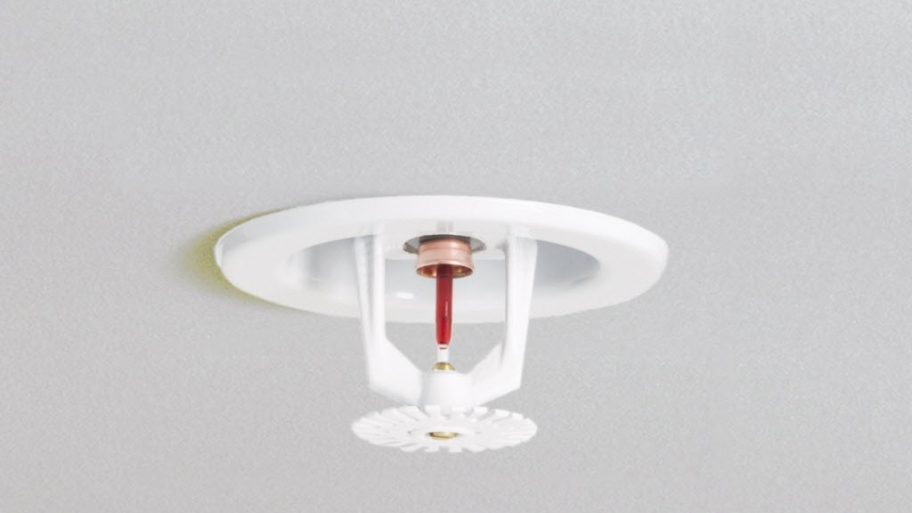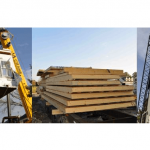Will Fire Sprinklers Be Required in Your New Home?


It All Started with Smoke Alarms.
Prior to 1973, there was no requirement for smoke alarms in a home. Building codes change regularly and protecting the population from home fires was introduced in 1973 with the requirement for new homes to have a single smoke alarm. Here is a brief history of how the smoke alarm requirement has expanded:
1973
One smoke alarm is required for the whole home. 1979
Code changed to require a hardwired alarm be installed if a home had more than $1,000 of work done on a home. 1988
One smoke alarm is required on every floor of a home. 1991
One smoke alarm was required in each bedroom 2003
A smoke alarm is required in the vicinity outside of each bedroom
Technology made such advances in smoke detection devices that nearly everyone could afford to install a smoke detector in their home by the late 1970’s. In doing so, annual fatalities from home fires were almost cut in half.
There are two main types of smoke detector sensors. Photoelectric detectors use beams of light or low-powered lasers. In the event of a fire that generates sufficient smoke, these light beams would be blocked, triggering an alarm. Photoelectric detectors tend to be larger and aren’t very sensitive.
Related: HOW WE GET HOME MODULES TO DIFFICULT HOME SITES
Ionization detectors, on the other hand, are the kind that exist in over 90% of homes today. In place of light beams, they use an ionization chamber and a source of ionizing radiation to detect smoke. Compared to photoelectric detectors, ionization detectors are smaller, much more sensitive, and cheaper. Because of this, they’re also much more common in homes.
How Do Fire Sprinklers Really Work?
 We have all seen the movie where a high school or college student stands on a desk and holds a lighter up to a fire sprinkler head. In mere seconds all the sprinklers in the building are going off and everyone is soaked with water. Class dismissed! While that plays well in the movies, that is not how a real sprinkler system works.
We have all seen the movie where a high school or college student stands on a desk and holds a lighter up to a fire sprinkler head. In mere seconds all the sprinklers in the building are going off and everyone is soaked with water. Class dismissed! While that plays well in the movies, that is not how a real sprinkler system works.
A residential sprinkler system is a network of fire rated pipes running through a home with water contained under pressure. Each sprinkler that is attached to this network of pipes is really nothing more than a faucet. However, with a normal faucet, you manually move a lever or turn a handle to open a valve allowing the water to come out. With a sprinkler head there is a heat activated plug that automatically opens when a fire breaks out.
There are two types of sprinkler heads. In one, there is a soft metal alloy called Wood’s metal. When a fire breaks out the heat of the flame melts the metal releasing the plug allowing the sprinkler to activate. The other type of head has a small vial that holds the plug shut. The vial is filled with a glycerin-based liquid. When the heat from the fire make the air around the sprinkler head reach a certain temperature, the liquid expands and the vial shatters releasing the plug. With the plug released, water is allowed to flow freely from the sprinkler head.
In both cases, only sprinkler heads that are exposed to enough heat to release the plug are activated, not every sprinkler in the home. In most cases, sprinkler heads are designed to have a coverage area of 6 feet in any direction. When activated, a single sprinkler will saturate that area until the water is manually shut off.
Fire Sprinklers and Building Codes
Forty-nine states and the District of Columbia use the International Residential Code (IRC) for single family home construction. These building codes are updated every three years and then typically adopted state by state over time. Some states may take six to nine years or more to adopt a new version of the building code. In 2009, the IRC added the requirement for fire sprinkler systems for building single family homes to the building code.
However, each state adopts the new building code over time and can even reject specific parts of the adopted building code for their state. To say fire sprinklers have been controversial may be an understatement. Most states, while adopting the 2009 IRC or even later releases of the code, have specifically excluded the requirement for fire sprinklers in single family homes.
Does your state require fire sprinklers in single family homes? Here is a state by state overview:
- States/regions requiring fire sprinklers in new, one- and two-family homes: CA, MD, Washington, D.C.
- States prohibiting statewide and new, local adoptions of fire sprinkler requirements: AK, AL, AZ, CT, DE, GA, HI, ID, IN, KS, KY, LA, MA, MI, MN, MS, MO, NH, NJ, NY, NC, ND, OH, PA, SC, SD, TX, UT, VA, WV, WI
- States allowing local adoptions of sprinkler requirements for new homes: AR, CO, FL, IL, IA, ME, MT, NE, NV, NM, OK, OR, RI, TN, VT, WA, WY
(*Note: In MA and NY, homes of a certain size require residential fire sprinklers)(Source: NFPA)
Are Fire Sprinklers Worth It?
Fire Sprinklers have been controversial in residential construction. The Fire Marshals in each state have been pushing for mandatory fire sprinklers in every home for years. However, for many it comes down to a cost versus benefit analysis. Smoke alarms have been implemented in residential homes since the early 1970’s with great effectiveness. Thousands of lives are saved every year with the inclusion of under $200 worth smoke alarms in every new home.
Fire sprinklers can be expensive. In areas with access to public water, a sprinkler system can add around $2-$4 per square foot to a homes cost. This means that on a 2,000 square foot home you could add $4,000 – $8,000 of additional costs to your new home. If a new home is constructed in a rural area, then you must add a 500 gallon water holding tank and a continuous power source to supply water to the sprinkler system in the event of a fire in the electrical source. Many new home owners don’t want to pay the additional cost nor use up floor space in their new home for the required equipment.
While Fire Marshals and the fire safety industry has worked hard to add the requirement for fire sprinklers to building code, home builders and even home buyers have resisted the mandatory requirement. For example, Pennsylvania added the requirement to its statewide building code at one point. Pennsylvania is primarily a rural state with many of its residents having limited access to public water systems. The residents of the state successfully lobbied their state representatives to repeal the requirement and home building once again resumed in the state.
It’s Your Decision
In two states, plus the District of Columbia, you don’t have a choice. You must have fire sprinklers in your new home. However, in the remaining 48 states, it’s still your decision. Fire Marshals will continue to push for the adoption of a mandatory residential fire sprinkler requirement in every state. For now, if you believe that the cost of adding residential sprinklers is worth it to you and your family, you can voluntarily add them to your new home. Otherwise, smoke alarms will continue to provide a cost effective first warning to your family in the event of a fire.
The post Will Fire Sprinklers Be Required in Your New Home? appeared first on Impresa Modular.




